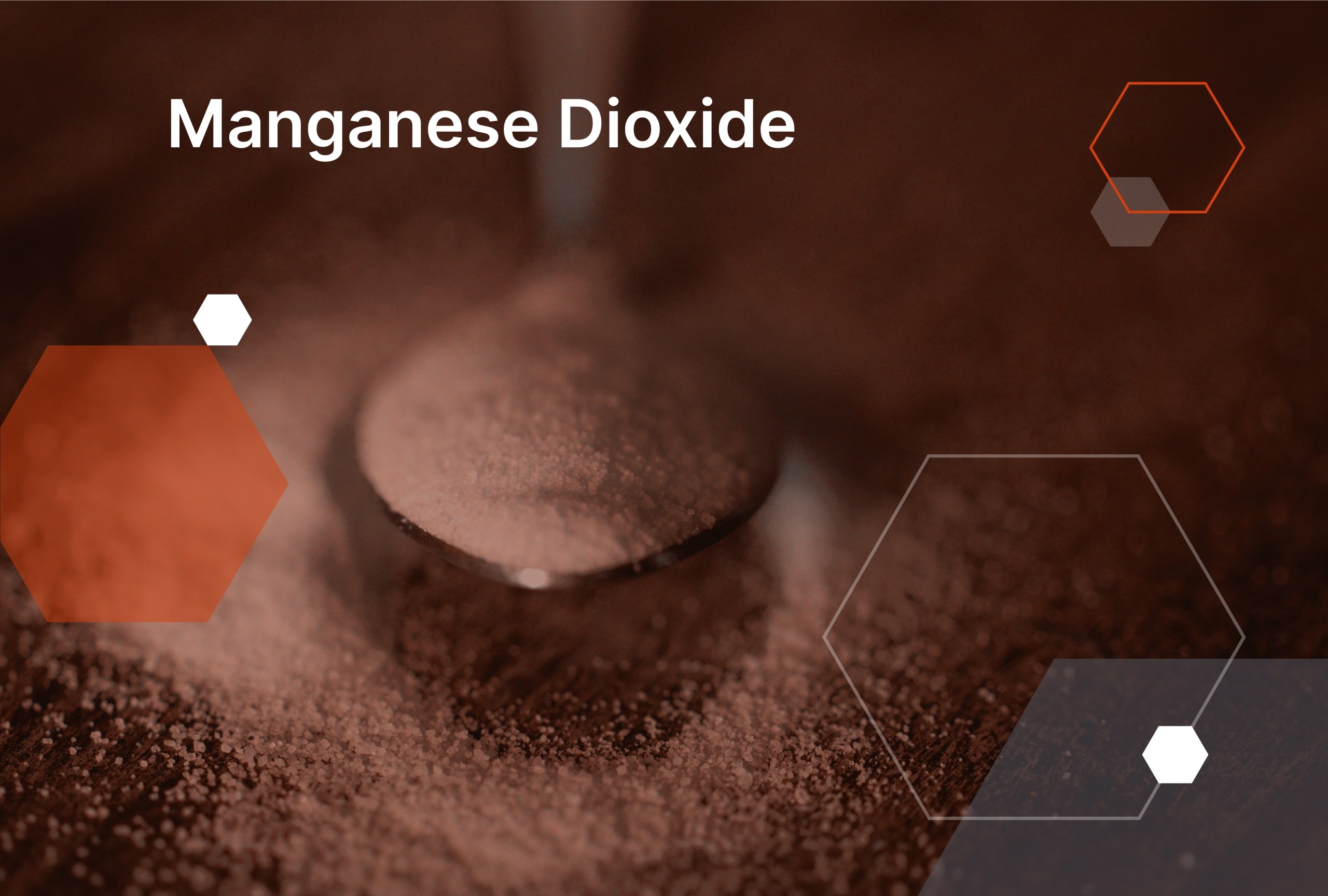
What is Manganese Dioxide used for?
Kemiex is an all-in-one market information, purchasing and sales platform for animal and human nutrition raw materials. In the following series of articles, we will explain the functions and uses of products that can be found in the Kemiex marketplace. On this occasion, we are going to explain the benefits of Manganese Dioxide:
What is Manganese Dioxide used for?
Manganese Dioxide is a chemical compound that has a wide range of applications in different industries due to its unique physical and chemical properties. Its chemical formula is MnO2, and it occurs naturally in the form of the mineral pyrolusite.
What are the main uses of Zinc Oxide?
1. Oxidizing Agent:
One of the primary uses of Manganese Dioxide is as an oxidizing agent. It can effectively oxidize various chemicals and compounds, which makes it an essential component in the production of batteries, particularly dry-cell batteries. Manganese Dioxide acts as a depolarizer in these batteries, converting hydrogen gas into water and generating electricity.
2. Sulfuric Acid Catalyst:
Manganese Dioxide is also used as a catalyst in the production of Sulfuric Acid. Sulfur Dioxide gas is oxidized using Manganese Dioxide to produce Sulfur Trioxide, which is a critical intermediate compound in the production of Sulfuric Acid. The catalyst helps to speed up the reaction and increase the yield of Sulfur Trioxide.
3. Production of Ceramic Materials:
Another application of Manganese Dioxide is in the production of ceramic materials. It is used as a colouring agent to produce brown and black pigments in ceramic glazes, and is also added to clay during the manufacturing process to improve its strength and durability.
4. Production of steel:
Manganese Dioxide is also used in the production of steel and other ferrous alloys. It is added to the iron ore during the manufacturing process to remove impurities and improve the quality of the final product. It also helps to convert impurities like sulphur and phosphorus into slag, which is removed from the iron to produce high-quality steel.
5 Decolorizing Agent:
Other applications of Manganese Dioxide include its use as a decolorizing agent in glass production, a component in the production of dry-powder fire extinguishers, and an oxidizing agent in the chemical industry.
Overall, Manganese Dioxide is a versatile chemical compound with a wide range of applications in various industries. Its unique properties make it an essential component in the production of batteries, ceramics, steel, and other products, and its oxidizing and catalytic abilities make it an indispensable chemical in many chemical processes.
Which foods are the main sources of Manganese Dioxide?
Manganese Dioxide is not a nutrient that is typically found in food sources, as it is primarily used in industrial and technological applications. However, trace amounts of manganese can be found in a variety of plant-based foods, including:
1. Whole grains: Whole grains such as brown rice, oats, and quinoa contain trace amounts of Manganese, with brown rice having the highest amount.
2. Legumes: Legumes such as lentils, chickpeas, and kidney beans also contain small amounts of Manganese.
3. Nuts and seeds: Almonds, hazelnuts, cashews, pumpkin seeds, and sesame seeds are all sources of Manganese.
4. Spinach: Spinach is a leafy green vegetable that contains small amounts of Manganese, along with other nutrients.
5. Tea: Both black and green tea contain small amounts of Manganese.
6. Pineapple: Pineapple is a tropical fruit that contains small amounts of Manganese, as well as other vitamins and minerals.
7. Tofu: Tofu is a soy-based protein that contains trace amounts of Manganese.
8. Berries: Berries such as raspberries and blueberries contain small amounts of Manganese.
9. Sweet potatoes: Sweet potatoes are a root vegetable that contain trace amounts of Manganese, along with other nutrients such as beta-carotene and vitamin C.
10. Garlic: Garlic is a flavorful bulb that contains small amounts of Manganese, as well as other health-promoting compounds.
It is important to note that the amount of Manganese in these foods is relatively small and unlikely to provide significant amounts of the mineral on its own.
Where to buy bulk Manganese Dioxide and get market information?
In Kemiex, we offer a safe and private online environment to buy and sell raw materials for the Feed, Food, Veterinary, and other life science industries. We also offer market information such as Price Trends, Trade Flows and Market News for all the micro-ingredients of the mentioned industries.